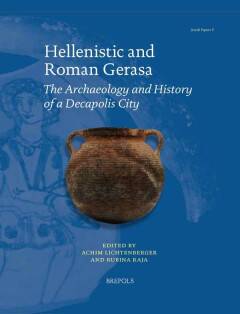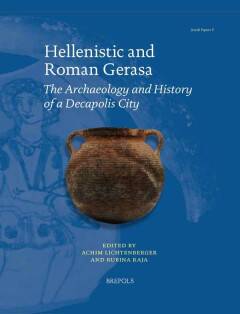
- Retrait gratuit dans votre magasin Club
- 7.000.000 titres dans notre catalogue
- Payer en toute sécurité
- Toujours un magasin près de chez vous
- Retrait gratuit dans votre magasin Club
- 7.000.0000 titres dans notre catalogue
- Payer en toute sécurité
- Toujours un magasin près de chez vous
Hellenistic and Roman Gerasa
The Archaeology and History of a Decapolis City
Achim Lichtenberger
Livre broché | Anglais
245,95 €
+ 491 points
Description
The Graeco-Roman Decapolis city of Gerasa was a flourishing centre of population from the Late Hellenistic up to the Early Islamic period. It was also home to a vibrant ceramics industry. Kilns found throughout the city, with a concentration in the Hippodrome, suggest that Gerasa was in fact a mass-production centre in the Decapolis region over a number of centuries, manufacturing a vast array of material to suit the changing needs of daily life. Drawing on finds yielded during excavations by the Danish-German Northwest Quarter Project and other archaeological projects, as well as the research undertaken within the Ceramics in Context project, this volume evaluates the pottery from Gerasa produced in the Late Hellenistic and Roman periods. Typology, development over time, and variations in the Gerasene pottery are explored, and rare examples of imported material are analysed in order to shed light both on the inner workings of the city, and on the networks that extended beyond Gerasas walls. The contributions gathered here examine the archaeology and history of Gerasa and assess ceramic remains alongside other finds from both the city and neighbouring urban centres. In doing so, they seek to contextualize this material in a broader cultural and historical context, and to improve our understanding of consumption, trading, and networks in the wider Decapolis area.
Spécifications
Parties prenantes
- Auteur(s) :
- Editeur:
Contenu
- Nombre de pages :
- 390
- Langue:
- Anglais
Caractéristiques
- EAN:
- 9782503585048
- Date de parution :
- 17-09-20
- Format:
- Livre broché
- Format numérique:
- Trade paperback (VS)
- Dimensions :
- 211 mm x 279 mm
- Poids :
- 1632 g

Les avis
Nous publions uniquement les avis qui respectent les conditions requises. Consultez nos conditions pour les avis.






